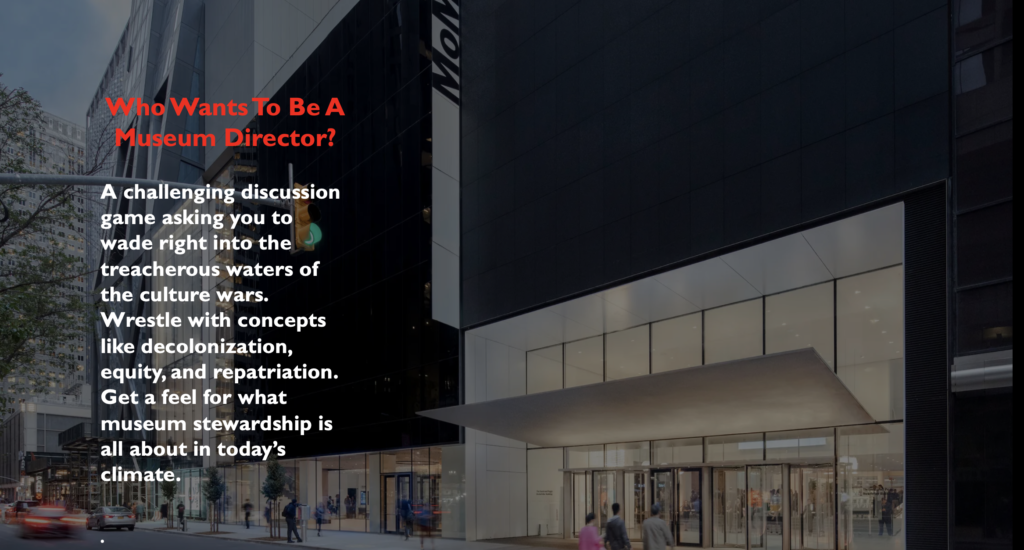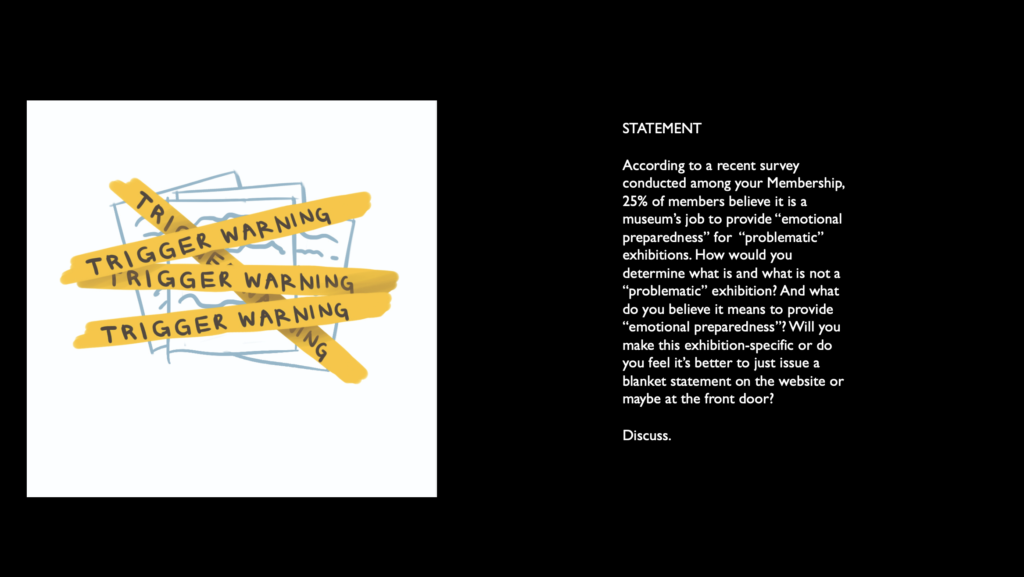
As the end of the second semester of my MFA at Maine Media comes into focus, I thought I would write a post about the independent academic work I’ve done over the last few months. Most of the winter and spring has been spent creating my studio work, but the academic work has been rewarding to me, as well.
Probably because I spent 36 years working in news, I came to my visual art practice with a deeply entrenched interest in “the zeitgeist” — the defining spirit or mood of a particular period of history as shown by the ideas and beliefs of the time.
So, what I chose to look at this semester is the question of how art museums and culture wars intersect. And the question became, How do we think and speak about art in this time of deep polarization? It is hard enough to speak about the weather, never mind the meaning of Picasso…
I arranged 17 interviews with a variety of people involved in different areas of art, galleries and museums: journalists, academics, gallerists, museum directors, artists, critics, historians, trustees, and one therapist.
I also tried to keep up with the stories popping up on what felt like a daily basis about exhibitions opening and then closing due to conflict, protests, arguments, skirmishes, etc.
Taking the findings from the one-on-one (Zoom) interviews and using the real life examples I monitored, I created a type of “game”. Specifically, I created cards that asked the participants to be a museum director and make some very tricky and possibly controversial decisions.
So, the game looks like this:

What you see on the left is the front of the card — a graphic or illustration of some sort, in this case “Trigger Warning”.And on the right is the scenario that you, the player (the Museum Director) must resolve.
Sometimes, the cards delve into the personal realm, as well.

How would you advise your friend’s son? Go for the MFA, or go for the MBA? A mountain of debt and probably some very different opportunities…
This “game” is in lieu of an academic paper. Can I just say how much I love the fact that I am part of a program that encourages me to use my creativity to resolve issues as they arise? To be resourceful? I really didn’t believe that a mere paper would capture the complexity and the vitality of the potential conversation. So I came up with this instead.
The cards are written in a neutral tone. There are no right or wrong answers. In fact, there are no answers at all. Instead, what there are is a set of legit scenarios that ask participants to both think and listen. And to explore all options before deciding on a course of action. Someone might feel that Picasso’s now-infamous misogyny needs to be addressed in wall text; another person might feel that it is wrong to single out Picasso and, instead, ask the museum to provide greater context of gender roles in the mid- to late-20th century. Yet another person might ask, Why would we evaluate Picasso on anything other than his artistic merit? All of these avenues — and many more — are available to explore.
One thing is for certain: the art world is intimately involved in the big conversations happening now about culture wars, identity politics, complexion of collections, and the like. Museums have a key role to play in broadening representation and our understanding of the human story.
Maybe this little game has a place in generating conversation. Not just the talking part, but also the listening.
Having worked in museums, I love these grounding questions that bring together our humanity and the job.
Fascinating. Compelling.
Thank you x
These are brilliant questions. Are there other cards? Will you share how curators, gallery owners, academics responded (names with held of course). There is a somewhat larger question related to your second card about the challenges straight white males face building careers as artists that has to do with the subjects of contemporary photography. Whatever the identity of the artist, identity (and environment) seems to me to be central in the work I see that is winning awards, getting shows, and securing publication. There is little photography that I see about photography itself. There is little about the medium’s basic elements. More and more, it’s all about the subject. In such a world photography becomes less an art and more a pedagogy. I don’t believe we see this in painting or sculpture or any of the other visual arts. This world shows scant interest in Weston, Adams, Callahan or even Steven Shore, William Eggelston, Joel Meyerowitz, the Bechers, etc. I’d agree that there is no point in duplicating these artists but surely there is a place for photography that doesn’t merely seek to instruct.
Thank you, Eric! There are 25 cards in total and they cut across a large number of the issues today. I hope they do, that is to say! I am planning on sharing more information about what I learned. You will NOT be surprised to hear that identity and climate are the two most prominent topic areas. Lots to say about that! Stay tuned, and thank you. I’m considering making the cards available for purchase (just have to swap out some images for rights-cleared images, of course). And making new cards every year to keep up with the issues!